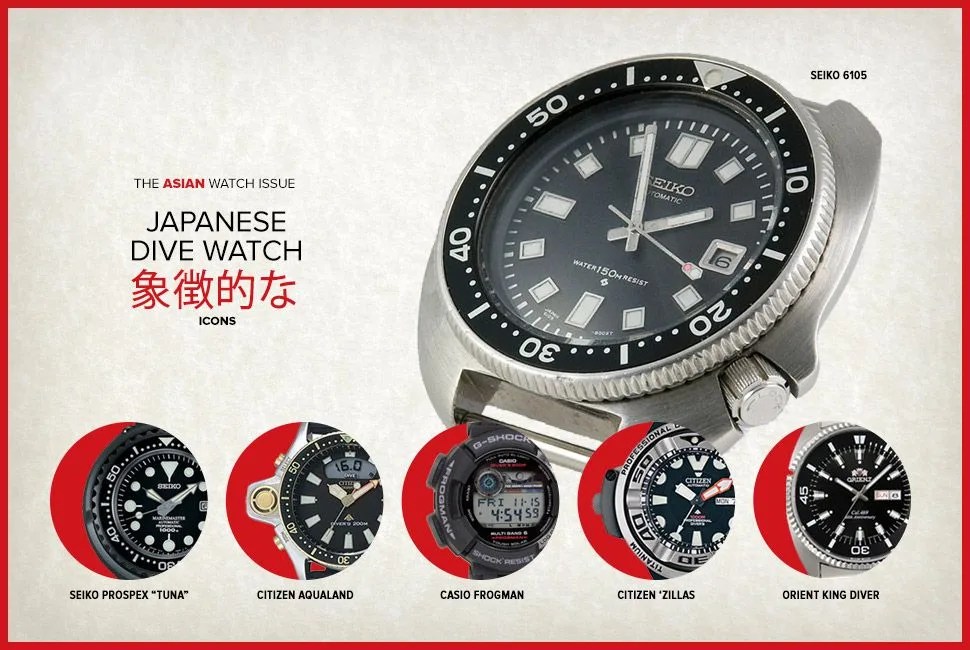When it comes to dive watches, many immediately think of iconic Swiss watches like the Rolex Submariner and the Blancpain Fifty-Fathoms — and rightly so. These two in particular can be credited with bringing the genre into the mainstream and incorporating many of the dive watch features that we now consider de rigeuer: timing bezels, screw down crowns, luminous dials, anti-magnetic protection…check, check, check and check.
Of course, the story doesn’t stop here. In fact, there’s another country that can credibly lay claim to a long and storied history with this particular genre: Japan. Maybe it’s due to the fact that Japan is an island nation combined with its history of precise craftsmanship, but no survey of great diving timepieces is complete without a fistful from the Land of the Rising Sun. If you need evidence of Japan’s dive watch prowess (or just a road map to buying yourself one), read on.

Orient King Diver
One of the oldest true Japanese dive watches hails from Orient, a Japanese watch company founded in 1950. The King Diver was introduced in 1964, designed in the same vein as the popular compression-case Swiss dive watches of the sixties. As was typical of these types of divers, the timing bezel was internal and operated by a second crown on the outside of the case, while the case back was compression sealed as opposed to merely screwed on. The King Diver’s popularity spawned an entire collection of dive watches stretching all the way into the early ’80s. We love this piece, not only for its history, but also for its elegant looks. It’s not hard to see a Japanese take on James Bond sporting this piece with a tux one moment, underwater fighting off legions of baddies the next.
